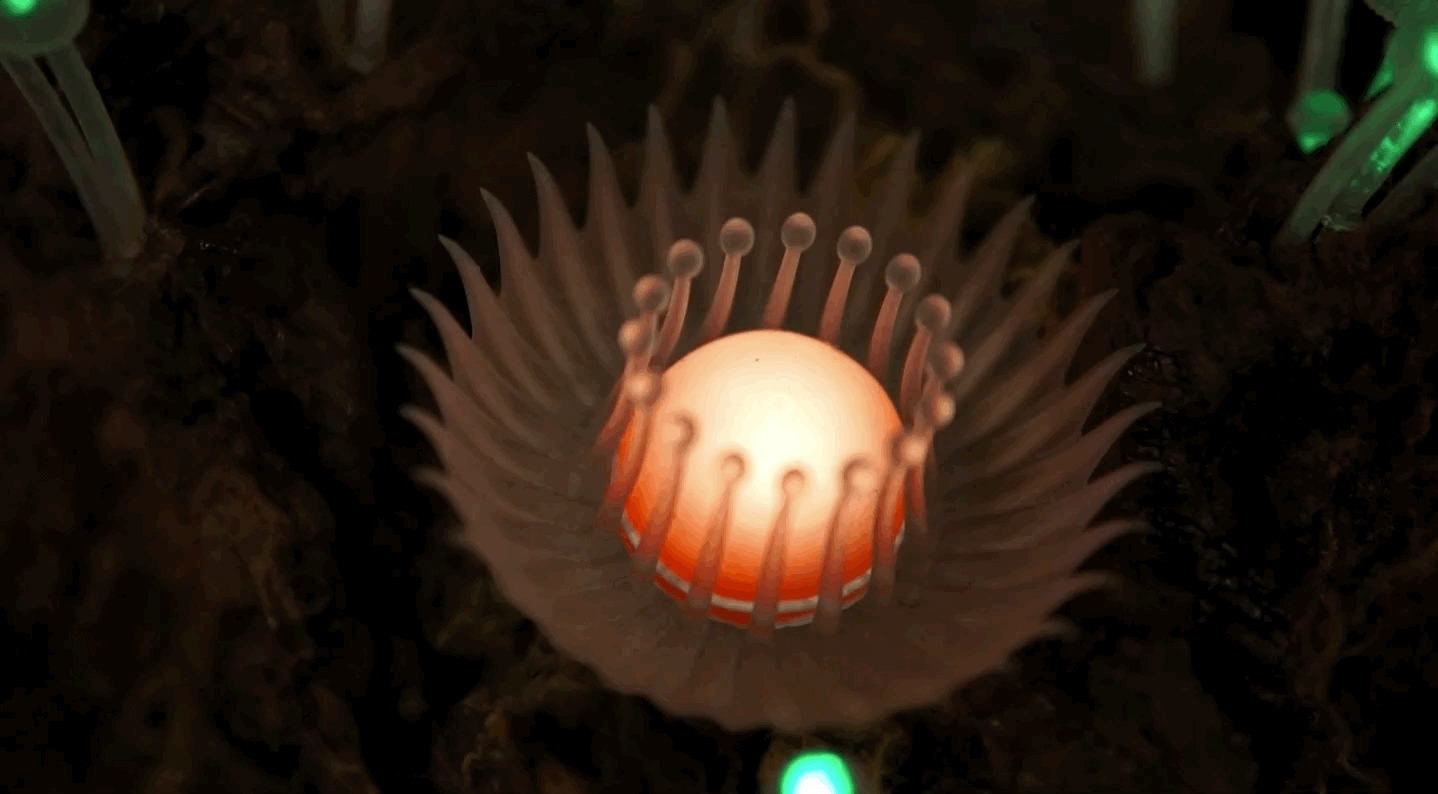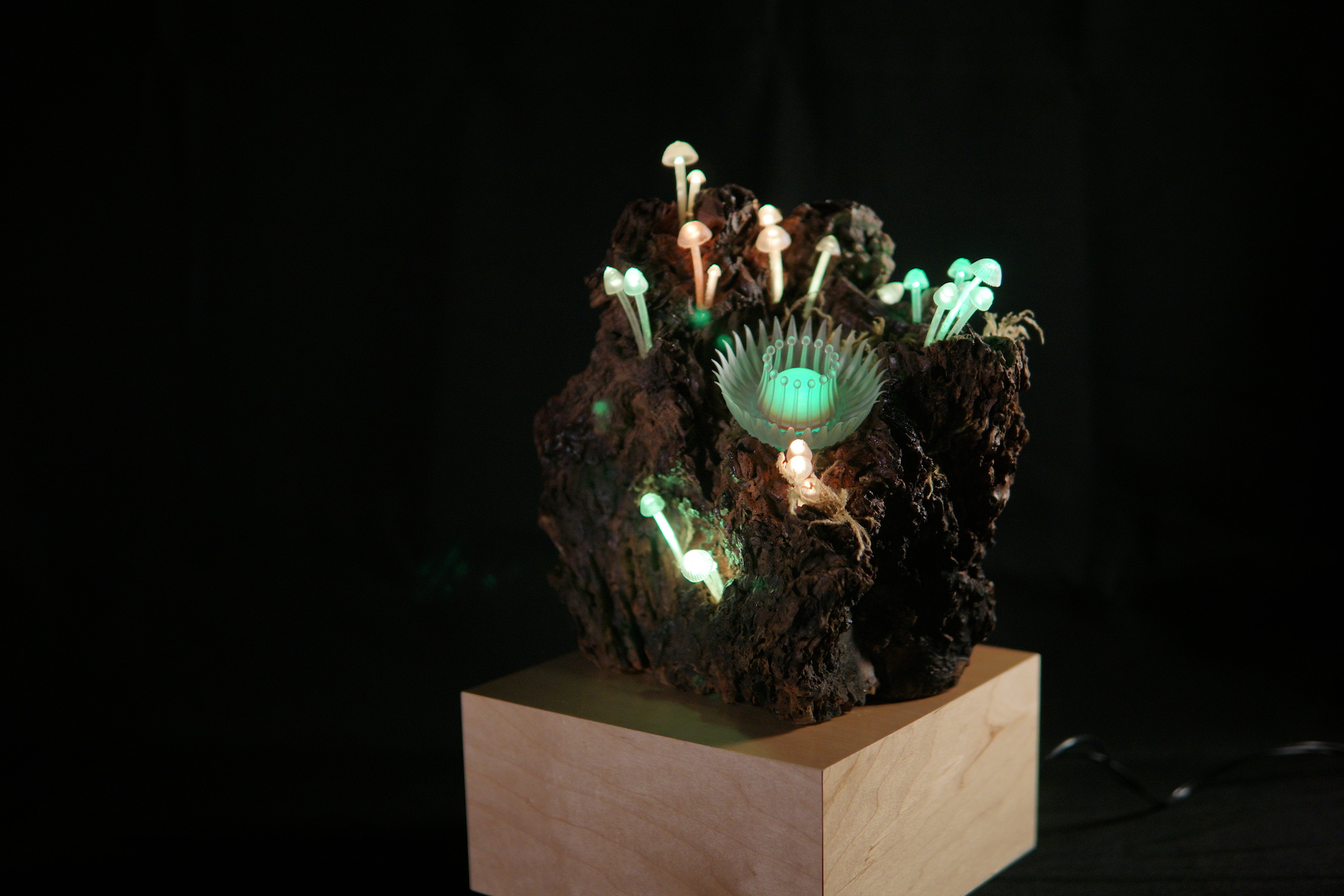Signs of Life: Forest

“For what is Nature? Nature is no great mother who has borne us. She is our creation.” - Oscar Wilde, The Decay of Lying
What do we picture when we imagine “Nature”? Dense vegetation, birdsong, the hum of insects, running water, gusts of wind, and gentle rain: interdependent ecosystems of flora and fauna. Modern life, in contrast, excels at excluding nature at all costs: cities of concrete, drywall, insulation, and vast technological networks protect us from the millennia we spent living “outside” throughout our shared history. Today we confront these two discrete networks of life—both electrified with possibility—as so often framed in stark opposition. What would it mean to complete the circuit once more?
Signs of Life is an interactive terrarium of pneumatic and bioluminescent flora and fungi that interacts with gallery goers in enigmatic but determinable ways. As a representation of nature-machine symbiosis, and an implicit gesture towards growth out of decay, it invites its viewers to wonder: “What comes next?” By today’s standards this question may seem quaint, or even dated. “What comes next?” is a modernist idea: an era ends, and is followed by the unknown. We gaze into “What comes next?” not really as participants, but as speculators. This idea informs the thesis of Frank Kermode’s 1967 book The Sense of an Ending, in which he argues that every generation seeks to narrativize itself as the last. Yeats, he writes as an example, imagined a future beyond order and beyond reckoning. “We live in the mood of end-dominated crisis,” Kermode declares, as if to contextualize our concerns as mere cyclical self-indulgence: we want to believe we’re on the precipice of annihilation to give our stories shape. Kermode didn’t realize, of course, that in 1967, even as he typed his argument line by line, that the delicate balance of Earth’s climate had already started to tip warmer.
Postmodernity, on the contrary, rejects sequence: it is not “What comes next?” but “What happens now?” After Kermode, we came to distrust metanarrative, and to consider the present less as a history that cycles than as an effectively random collage of meaningless events. Is postmodernity ending? What comes next?
Today we must consider both of these conditions for the world we inhabit: that narrative may simply be how we constellate randomness into meaning, yet nevertheless as a species we confront a looming existential threat in global climate change. “Signs of Life” explores this intersection: a post-human technomaterial ecosystem which is also defined by humans having-been. Fungi glow and flowers respire based on the “signs of life” that humans in the gallery leave behind: breaths of CO2, humidity, and sounds. The system thrives in the absence of humans, but presumes humans as an antecedent. As a terrarium, “Signs of Life” is cultivated; as a mechanism, it is assembled.
Date: Dec, 2019
Author: Kuan-Ju Wu, Adam Hutz
